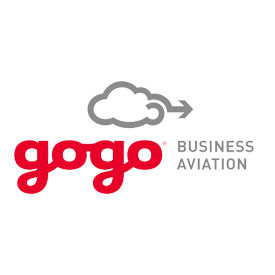The Weather Company, an IBM business announced on Thursday a deal with Gogo Business Aviation that will enable the delivery of real-time turbulence reports and alerts directly to pilots, dispatch and other operations personnel.
Gogo will implement Weather’s patented Turbulence Auto PIREP System (TAPS), a turbulence detection algorithm, on their aircraft-based communications server. The TAPS software will reside on Gogo’s server, which provides access to the necessary data generated by the aircraft to create reports of turbulence intensity.
Gogo’s US-based air-to-ground and global satellite communication network is used to send the reports for immediate action in flight operations and weather forecasting. This is the first time a non-traditional system on the aircraft will be used to help enhance flight safety.
Traditionally, flight operations personnel, pilots and aviation meteorologists received coded verbal reports with limited information on flight conditions, also known as PIREPS. Due to multiple reasons, including a lack of cockpit data connectivity, pilots were not able to get real-time updates. Using the Gogo network, pilots in the cockpit will now be able to access real-time turbulence reports and forecaster created alerts through Weather’s flight planning and operations applications like WSI Fusion and WSI Pilotbrief, and aircraft communication displays.
“Leveraging Gogo’s expanded fleet of aircrafts, The Weather Company can quickly share real-time turbulence data directly with pilots and dispatchers, thereby improving crew and passenger safety,” said Mark Gildersleeve. “It is a great example of the Internet of Things in action, where we are collecting massive amounts of data very quickly and then using that insight to provide guidance to all flights that will be traveling through impacted air space.”
“In this increasingly connected world, it’s no longer just about passenger connectivity, we have to consider all the other ways we can leverage the available technology to enhance the overall flight experience and improve safety – such as a connected aircraft,” said Andrew Kemmetmueller, vice president of connected aircraft services, Gogo. “Our ability to provide access to real-time data through our network will help pilots and operations teams improve flight planning, and ultimately, help airlines deliver the best in-flight customer experience throughout a flight.”
In addition to real-time alerting, Weather will be able to leverage the TAPS reports to continually improve turbulence forecasts, the skill of Weather’s overall forecast model, and the WSI Total Turbulence solution.
Some customers of WSI Total Turbulence have seen a reduction in turbulence injuries and unnecessary turbulence-induced maintenance inspection by about 50 percent each. The reports will also empower Weather’s team of 40 aviation meteorologists to alert clients of weather-related safety risks globally.
On Wednesday, The Weather Company announced plans to advance the precision and accuracy of weather forecasting by combining hyper-local, short-term custom forecasts developed by IBM Research with itĺĺs global forecast model. The powerful combination of the two models will be called Deep Thunder, and will also use historical weather data to train machine learning models that will help businesses predict the actual impact of weather.
IBM Deep Thunder can also analyze weather for targeted areas retrospectively, and use machine learning-based weather impact models to help businesses more precisely predict how even modest variations in temperature could potentially have an impact on their business, from consumer buying behavior to how retailers should manage their supply chains and stock shelves; how insurance companies can analyze the impact of past weather events to assess the validity of insurance claims related to weather damage; or how utility companies can mine and model historical data of damage caused to power lines or telephone poles and couple that information with a hyper-local forecast to better plan for how many repair crews would be needed, and where.




